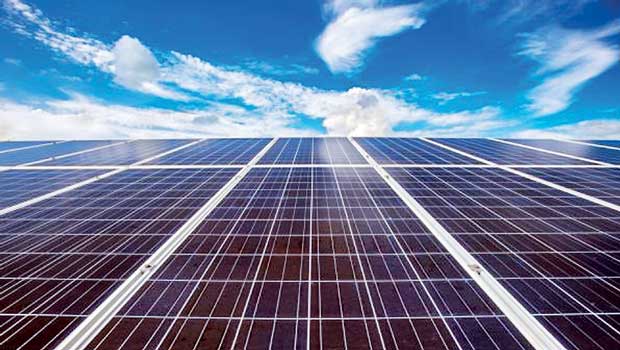Reply To:
Name - Reply Comment
Last Updated : 2024-04-19 00:03:00

 In 2050, solar power will end the divide between energy-rich and energy-poor countries. What will the energy industry look like in 2050? It seems far away, in fact it’s 33 years away. But 2017 was an equally distant future 33 years ago.
In 2050, solar power will end the divide between energy-rich and energy-poor countries. What will the energy industry look like in 2050? It seems far away, in fact it’s 33 years away. But 2017 was an equally distant future 33 years ago.
In 1984, I had just finished my undergraduate degree in a world of mainframe computers, where a digital watch with a calculator was the latest gadget. Computer CPU time was tightly measured, monitored, and priced. Storing 1 MB of data cost about US$2,000 (US$1,000 for the cassette and video tapes and US$1,000 for a decent VCR and stereo system). Copying a videotape took up a whole weekend, with significant loss of quality. A key development indicator was the number of telephone lines per 100,000 households.
In 2017, we enjoy practically unlimited computing power sitting in the smartphone in our pocket. We can store thousands of photos on a $200 smartphone that also takes pictures and records audio and video. Telephone lines are being dismantled and sold as recycled copper.
Year 2050 will bring the same sort of disruptions to the energy industry. Most of them are probably unimaginable now, but here are my thoughts about how our world might change. The disruption process has already started, as the industry is being turned upside down by three core changes.
First, we can generate our own solar power, and it is cheap. Second, electricity can be stored in powerful batteries like the Tesla PowerWall, and it is becoming cheaper. Third, all appliances are becoming ultra energy-efficient, like lightbulbs that consume 90% less power than before; the technology (unsurprisingly) is cheaper as well.
These changes are affecting the energy industry demand pattern. Before, energy demand would grow each year. Now, demand is actually declining in many countries, driving up prices as the value of the asset is fixed and new investments are needed.
Although the cost of infrastructure is largely fixed, most electricity customers pay a small fixed daily charge plus a larger variable charge based on the volume of electricity (kWh) they use. The electricity tariffs (cents per kWh) are an average of the (mainly fixed) system cost over the total volume of electricity delivered (kWh). Once demand declines, the overall volume goes down, so the unit price must increase to pay for the same fixed assets.
Energy industry at crossroads
The overall question is: Is this positive or negative? Well, it depends.
If you’re a power utility unwilling to adapt your business model, these trends are definitely bad news. But if you’re a consumer looking for more choices to get your electric power from, this is exciting. If you are an investor, keep in mind that some of today’s technology will be useless before 2050.
Technology obsolescence or stranded assets are serious risks. Many houses, including mine, built in the 1990s have internet cabling throughout the building, but wifi technology has made those cables redundant.
Today, the energy industry is at a crossroads. Utilities, private corporations, and governments are still debating whether to fully embrace clean energy, or continue business as usual. This is despite the fact that in many countries clean energy is now cheaper than fossil fuels. The numbers show that the debate is over.
Looking far into the future, it’s hard to make an accurate forecast of what the energy industry will look like 2050.
Today, most people, even those living in extremely poor countries such as Afghanistan, have mobile phones, and many of them smartphones. But thirty years ago, mobile phones were a technology reserved for the elite and was expensive. I believe the energy industry will follow the same path.
Electricity generation has long been dominated by coal and oil dominated transport. In the next ten years, we will witness a major shift away from these fossil fuels, which will finally stay underground. This reminds me of a former Saudi oil minister who once said that we didn’t end the Stone Age because we ran out of stone; we did so because technology reduced the need for so much stone.
A paradigm shift for the industry
The sun shines everyday, and it’s free. No one will be able to tax sunshine, or monopolize its energy. People will generate power and the excess will given away at no cost. Solar power generation and storage will become so widespread that today’s divide between energy-rich and energy-poor countries will come to an end.
Small community-based power companies will dominate the energy industry. The sector will invest in short-life assets, replacing the current model of investing in assets with guaranteed revenue for 30 years.
With more than 4.5 million off-grid solar installations, Bangladesh is leading the off-grid solar revolution. Afghanistan, Pakistan and other countries that still burn kerosene will soon generate their own off-grid electricity.
Batteries will continue to become lighter, and cheaper. We will be able to carry in our bags batteries powerful enough to provide daily electricity for a middle-income household in a developing country, or run a small electric car with 5 people for about 100 km.
In 2050, we will probably stop measuring electrical consumption with sophisticated metering systems. The same way we now make free calls on FaceTime, Skype or Viber, electricity will be free.
These changes will have huge ramifications on energy sector employment and skill sets. Today, highly skilled workers build large plants and infrastructure funded by taxpayers and borrowed funds, ignoring the cost to the environment and the future. Tomorrow’s energy industry will do away with that mindset.
Finally, the demand for electric cars will continue to grow. The People’s Republic of China is already the world’s top market. India wants to make only electric cars by 2030, and Volvo has stopped producing gas-powered engines.
Maybe we won’t even have to wait until 2050. All of this could very well happen by 2030. I certainly hope so.
(The writer is principal energy specialist, Central and West Asia Department at ADB)

Add comment
Comments will be edited (grammar, spelling and slang) and authorized at the discretion of Daily Mirror online. The website also has the right not to publish selected comments.
Reply To:
Name - Reply Comment
On March 26, a couple arriving from Thailand was arrested with 88 live animal
According to villagers from Naula-Moragolla out of 105 families 80 can afford
Is the situation in Sri Lanka so grim that locals harbour hope that they coul
A recent post on social media revealed that three purple-faced langurs near t

10 Apr 2024
09 Apr 2024